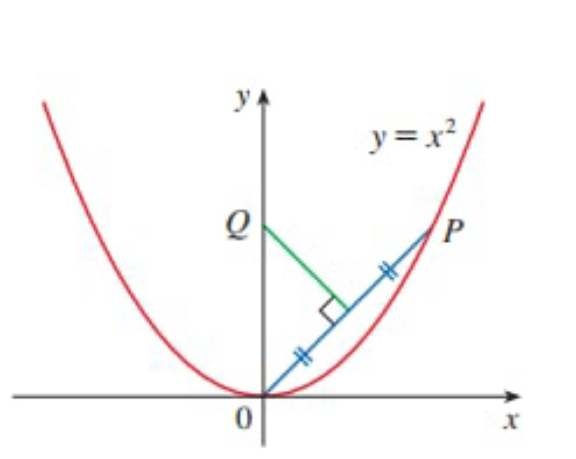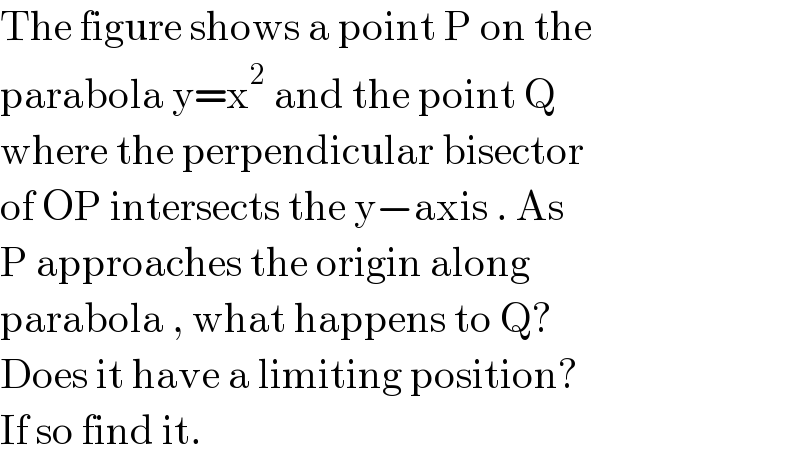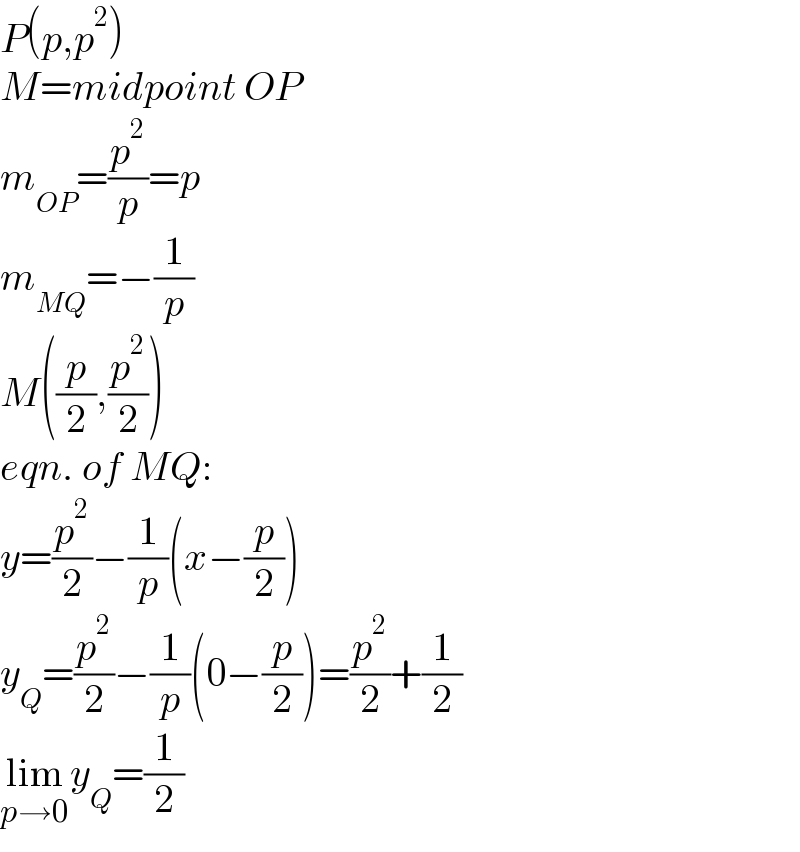
Question Number 134875 by bemath last updated on 08/Mar/21

Commented by bemath last updated on 08/Mar/21

$$\mathrm{The}\:\mathrm{figure}\:\mathrm{shows}\:\mathrm{a}\:\mathrm{point}\:\mathrm{P}\:\mathrm{on}\:\mathrm{the} \\ $$$$\mathrm{parabola}\:\mathrm{y}=\mathrm{x}^{\mathrm{2}} \:\mathrm{and}\:\mathrm{the}\:\mathrm{point}\:\mathrm{Q} \\ $$$$\mathrm{where}\:\mathrm{the}\:\mathrm{perpendicular}\:\mathrm{bisector} \\ $$$$\mathrm{of}\:\mathrm{OP}\:\mathrm{intersects}\:\mathrm{the}\:\mathrm{y}−\mathrm{axis}\:.\:\mathrm{As}\: \\ $$$$\mathrm{P}\:\mathrm{approaches}\:\mathrm{the}\:\mathrm{origin}\:\mathrm{along} \\ $$$$\mathrm{parabola}\:,\:\mathrm{what}\:\mathrm{happens}\:\mathrm{to}\:\mathrm{Q}? \\ $$$$\mathrm{Does}\:\mathrm{it}\:\mathrm{have}\:\mathrm{a}\:\mathrm{limiting}\:\mathrm{position}? \\ $$$$\mathrm{If}\:\mathrm{so}\:\mathrm{find}\:\mathrm{it}. \\ $$
Answered by mr W last updated on 08/Mar/21

$${P}\left({p},{p}^{\mathrm{2}} \right) \\ $$$${M}={midpoint}\:{OP} \\ $$$${m}_{{OP}} =\frac{{p}^{\mathrm{2}} }{{p}}={p} \\ $$$${m}_{{MQ}} =−\frac{\mathrm{1}}{{p}} \\ $$$${M}\left(\frac{{p}}{\mathrm{2}},\frac{{p}^{\mathrm{2}} }{\mathrm{2}}\right) \\ $$$${eqn}.\:{of}\:{MQ}: \\ $$$${y}=\frac{{p}^{\mathrm{2}} }{\mathrm{2}}−\frac{\mathrm{1}}{{p}}\left({x}−\frac{{p}}{\mathrm{2}}\right) \\ $$$${y}_{{Q}} =\frac{{p}^{\mathrm{2}} }{\mathrm{2}}−\frac{\mathrm{1}}{{p}}\left(\mathrm{0}−\frac{{p}}{\mathrm{2}}\right)=\frac{{p}^{\mathrm{2}} }{\mathrm{2}}+\frac{\mathrm{1}}{\mathrm{2}} \\ $$$$\underset{{p}\rightarrow\mathrm{0}} {\mathrm{lim}}{y}_{{Q}} =\frac{\mathrm{1}}{\mathrm{2}} \\ $$
